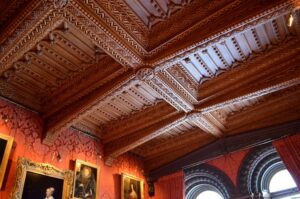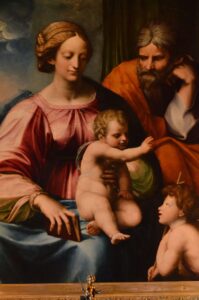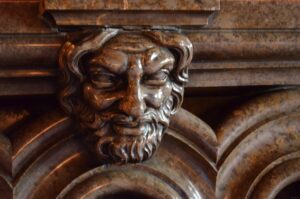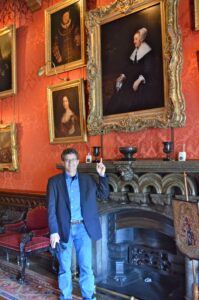Penrhyn Castle Tour Session #8
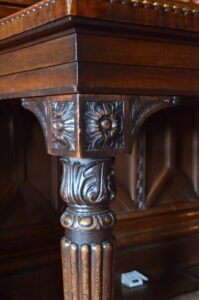
The fireplace serves as the centrepiece of warmth and to of course centralise more everyday family events around the dining table. I don’t care for carved heads in wood or stone in general, but I do admire the creative skills of the artisan who captured spirit good or bad to further captivate the imagination.(if we allow it). The centre of this mantelpiece is the single carved face of a strongly bearded man, again using Penmon limestone highly polished to its mottled stone finish. Medieval wild men carvings are present throughout the castle, both inside and out, and in places you least expect them.
One of features in this room is the mass of paintings and the breadth of artwork, which includes the famed Rembrandt painting of the Mennonite woman named Catrina Hooghsaet. This painting is said to be worth between £40-60 million. This is Randy Johnson from American Woodworker magazine helping me identify the painting and the carved fireplace mantlepiece area.
Heavy carved sideboards replete with an oak ice chest beneath served to hold and present food and though by modern standards this room is large, it is still cosier than many of the other rooms in the house. Heavy, masculine carvings and herringbone patterns in the back wall are continued as a theme from the castle and then softened by the ebony light-profiled pieces and carvings that go almost unnoticed. 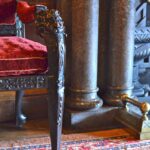
Religious paintings seem centre to many Trust households and of course they much be preserved for cultural reasons The virgin mother and child always captured the hearts and minds of painter and collector alike and the Ist Lord Penrhyn bought several through is then Belgian agents C.J. Nieuwenhuys. Last again is the ceiling that covers the whole room with splendid plasterwork. This speaks for itself!